Phase separation drives aberrant chromatin looping and cancer development
- PMID: 34163069
- PMCID: PMC8647409
- DOI: 10.1038/s41586-021-03662-5
Phase separation drives aberrant chromatin looping and cancer development
Abstract
The development of cancer is intimately associated with genetic abnormalities that target proteins with intrinsically disordered regions (IDRs). In human haematological malignancies, recurrent chromosomal translocation of nucleoporin (NUP98 or NUP214) generates an aberrant chimera that invariably retains the nucleoporin IDR-tandemly dispersed repeats of phenylalanine and glycine residues1,2. However, how unstructured IDRs contribute to oncogenesis remains unclear. Here we show that IDRs contained within NUP98-HOXA9, a homeodomain-containing transcription factor chimera recurrently detected in leukaemias1,2, are essential for establishing liquid-liquid phase separation (LLPS) puncta of chimera and for inducing leukaemic transformation. Notably, LLPS of NUP98-HOXA9 not only promotes chromatin occupancy of chimera transcription factors, but also is required for the formation of a broad 'super-enhancer'-like binding pattern typically seen at leukaemogenic genes, which potentiates transcriptional activation. An artificial HOX chimera, created by replacing the phenylalanine and glycine repeats of NUP98 with an unrelated LLPS-forming IDR of the FUS protein3,4, had similar enhancing effects on the genome-wide binding and target gene activation of the chimera. Deeply sequenced Hi-C revealed that phase-separated NUP98-HOXA9 induces CTCF-independent chromatin loops that are enriched at proto-oncogenes. Together, this report describes a proof-of-principle example in which cancer acquires mutation to establish oncogenic transcription factor condensates via phase separation, which simultaneously enhances their genomic targeting and induces organization of aberrant three-dimensional chromatin structure during tumourous transformation. As LLPS-competent molecules are frequently implicated in diseases1,2,4-7, this mechanism can potentially be generalized to many malignant and pathological settings.
© 2021. The Author(s), under exclusive licence to Springer Nature Limited.
Conflict of interest statement
Declaration of interests
The authors declare no competing interests.
Figures



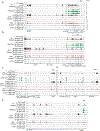
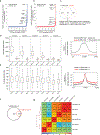
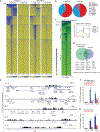
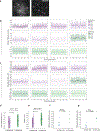








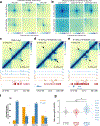
Comment in
-
Oncogenesis by phase separation.Nat Rev Genet. 2021 Sep;22(9):551. doi: 10.1038/s41576-021-00396-y. Nat Rev Genet. 2021. PMID: 34244676 No abstract available.
-
Fusion proteins drive cancer through phase separation.Nat Cancer. 2021 Dec;2(12):1285. doi: 10.1038/s43018-021-00295-5. Nat Cancer. 2021. PMID: 35121908 No abstract available.
References
Publication types
MeSH terms
Substances
Grants and funding
- T32 GM135095/GM/NIGMS NIH HHS/United States
- R35 GM128645/GM/NIGMS NIH HHS/United States
- R01 CA218600/CA/NCI NIH HHS/United States
- R01 CA215284/CA/NCI NIH HHS/United States
- T32 GM067553/GM/NIGMS NIH HHS/United States
- R01 CA211336/CA/NCI NIH HHS/United States
- P30 CA016086/CA/NCI NIH HHS/United States
- P30 NS045892/NS/NINDS NIH HHS/United States
- R01 HL153920/HL/NHLBI NIH HHS/United States
- TL1 TR003109/TR/NCATS NIH HHS/United States
- U54 HD079124/HD/NICHD NIH HHS/United States
- S10 OD018445/OD/NIH HHS/United States
- R24 GM137786/GM/NIGMS NIH HHS/United States
- R01 CA236209/CA/NCI NIH HHS/United States
- DP2 GM136653/GM/NIGMS NIH HHS/United States
- P20 GM121293/GM/NIGMS NIH HHS/United States
- R01 HL148128/HL/NHLBI NIH HHS/United States
LinkOut - more resources
Full Text Sources
Other Literature Sources
Medical
Molecular Biology Databases
Research Materials

